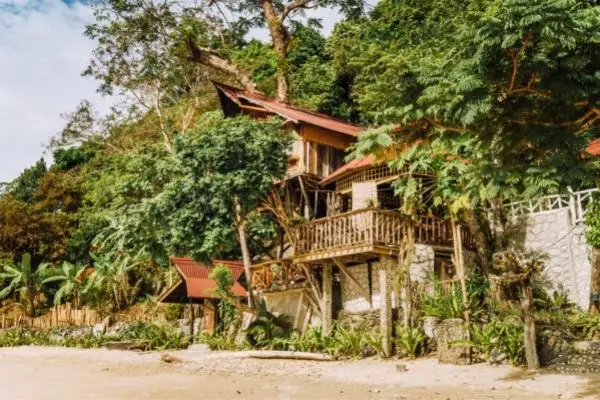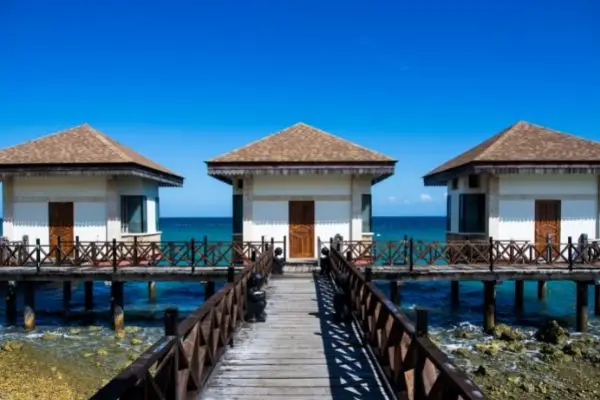Knowing the advantages of owning a beachfront property can be a tantalizing prospect. Ocean views enjoyed by those living by the sea never go old and have bright opportunities for investment as a leisure resort destination.
But there is also a set of less desirable characteristics associated with living near the beach or facing the ocean.
Table of Contents
Flooding, tsunamis and natural calamities
The Philippines is prone to flooding, especially during the typhoon season. Coastal areas are at higher risk of flooding due to storm surges and high tides.
Catastrophes like typhoons and flooding can occur everywhere regardless of where you are in the Philippines. But the damage can be more pronounced, and risk is higher among those who live near rivers or large bodies of water, especially when super typhoons strike.
Living by the sea is no exception, as tidal swells and rising sea levels during inclement weather conditions such as tropical depressions or typhoons can easily damage or even destroy your seaside property. The Philippines also lies within the Pacific Ring of Fire, known for its frequent earthquakes and volcanic eruptions. These natural disasters can trigger tsunamis, which can cause significant damage to coastal communities.
Although we often enjoy the peaceful atmosphere of a serene beachfront life, we don’t want to witness the other side of nature and how it can wreak havoc on our homes.
Sandy home floor
Sand is a naturally occurring element on beaches, and if you live by the sea, chances are you’ll get that sandy feel beneath your feet at home. While it’s more annoying than destructive, you’d wish it was easy to get rid of grains of sand to keep your home neat and tidy.
Whether you have an outdoor shower or not, you need to train your visitors in the practice of de-sanding their feet before they come inside. Not everyone may do it properly, so expect to do extra work maintaining the house’s pristine floor and general interior.
Visitor noise and inconvenience
In many cases, living in a beachfront property also exposes your vicinity to tourists and beachgoers. The natural attraction to the beach easily translates to unwanted sound and disturbances throughout the day, sometimes deep the night.
Worse, litterbugs and possibly intrusion of privacy from trespassers might also occur. This is especially common when living near a private resort accommodating day guests.
Not everyone can enjoy the pleasures of seaside residences, so don’t be surprised to get a request from a friend or family relative who wishes to stay and experience living by the sea for a short vacation.
In most cases, you’d be happy to accommodate, as any hospitable host would do. But there might be a time when you are unprepared to host or have other priorities to look after. This makes it awkward to say no to such requests if you are not used to doing so. It could appear as though living by the sea can also be a curse as much as it’s a blessing.
Corrosive sea spray
The salty air from the sea breeze has destructive properties that can cause damage to your home appliances such as refrigerators and electronic equipment.
Parking near the beach can hurt your car or any motor vehicle. Seaspray and tiny salt particles in the air can be corrosive to your car’s finish and internal parts.
Costly preventive maintenance
Development costs for beachfront properties are higher due to the extra expenses needed to extend their lifespan. Insulation from the impact of the sea breeze (such as the corrosive sea spray mentioned above) plus costs in maintaining a specialized sewerage system, as required by law.
This also means more expensive construction costs to protect your property better and insulation for appliances and motor vehicles.
Expensive insurance coverage
In anticipation of added risks of flood, typhoon, or any property damage, you need to pay higher insurance premiums for your beachfront property, that’s likely higher than a typical residential unit far from the sea.
The rise in sea levels and coastal pollution
Whether you are on the global warming bandwagon or not, there is overwhelming evidence that sea levels are rising. If your house is built close to the beach and touches the sea’s waves, be prepared to take measures as the sea levels rise and its associated hazards.
Coastal areas in the Philippines are often heavily polluted due to industrial and domestic waste being dumped into the sea. This pollution can have detrimental effects on both human health and marine life.
Conclusion
As attractive as it looks, owning a home close to the beach also presents a list of issues often not detected by merely looking at the property and marveling at the majestic views. If you are still keen on getting a beachfront home, the above challenges can and should be used to better bargain about its property value.


